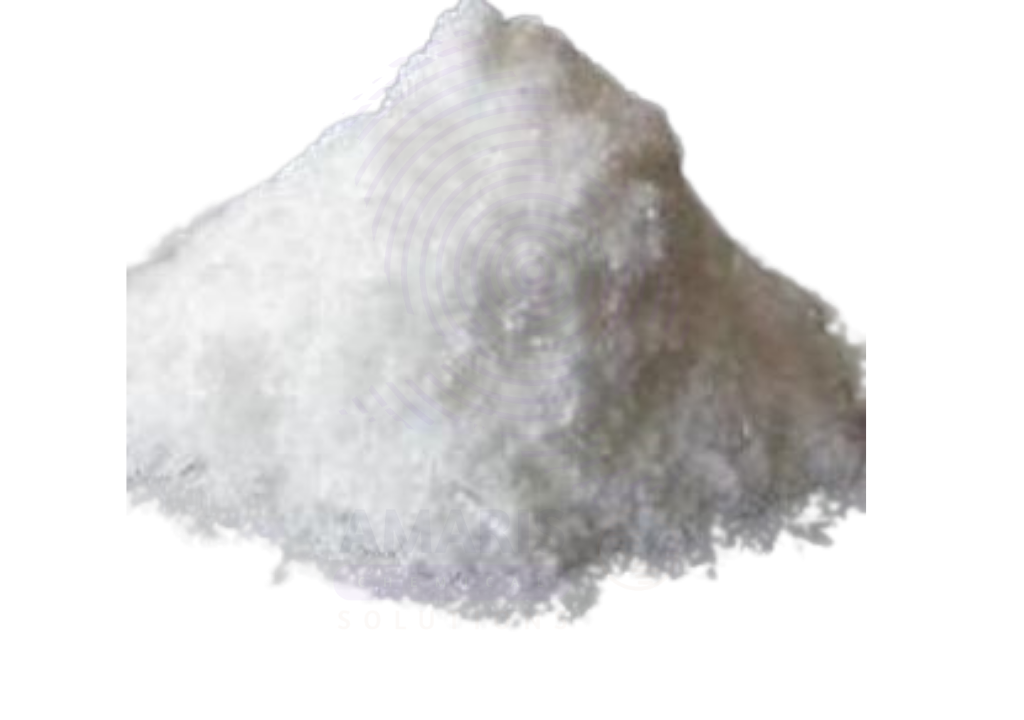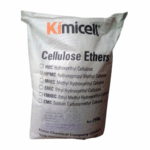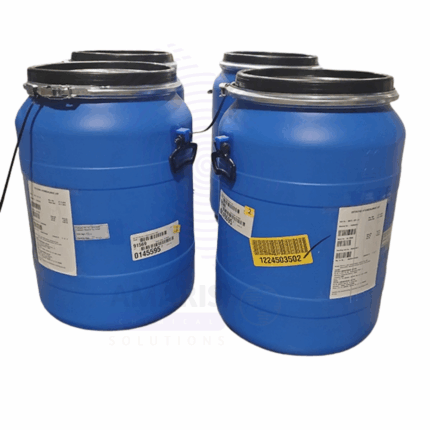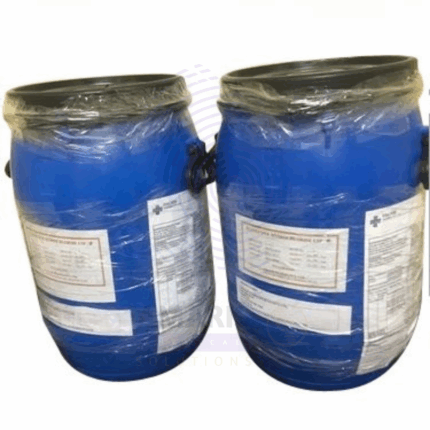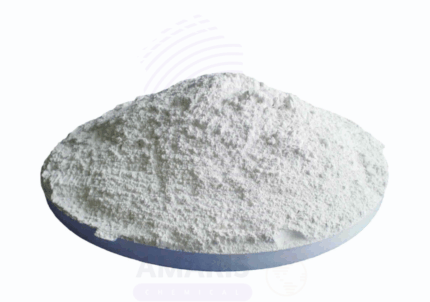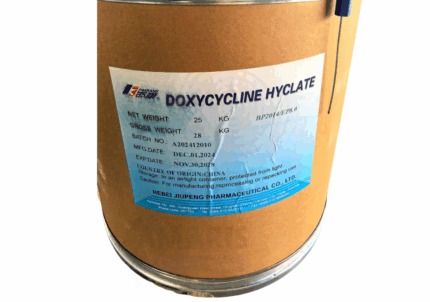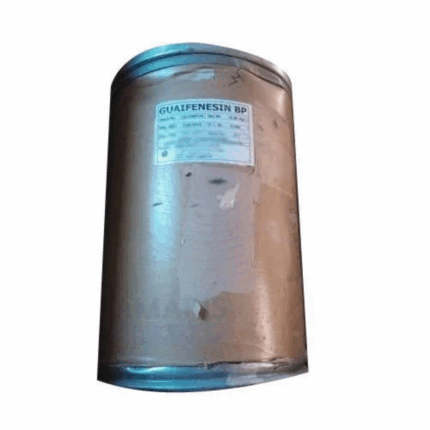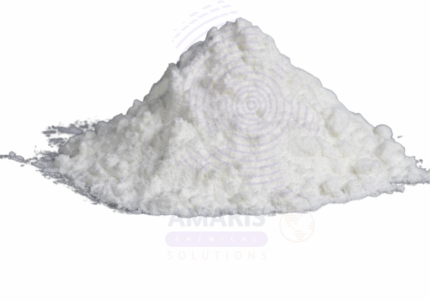Carbocisteine AJI 92
Carbocisteine AJI 92 is a high-purity pharmaceutical-grade amino acid derivative, chemically known as S-carboxymethyl-L-cysteine. It is a white to off-white crystalline powder with a slightly sulfurous odor and is freely soluble in water. Carbocisteine functions primarily as a mucolytic agent—reducing the viscosity of mucus and promoting expectoration in respiratory tract infections. The “AJI 92” specification refers to its compliance with the purity standards established by Ajinomoto’s amino acid quality benchmarks, ensuring it meets stringent pharmaceutical-grade quality control for active pharmaceutical ingredients (APIs). It is widely used in oral syrups, tablets, and granules in both human and veterinary medicine.
Carbocisteine AJI 92
Primary Uses
- Pharmaceuticals
- Mucolytic Agent: Used in the treatment of respiratory conditions such as chronic bronchitis, COPD, and sinusitis to break down mucus and ease expectoration.
- Formulations: Commonly found in syrups, effervescent tablets, granules, and capsules for both adult and pediatric use.
- Adjunctive Therapy: Sometimes used in combination with antibiotics or bronchodilators for enhanced respiratory support.
- Otolaryngology: Used to manage secretory otitis media and other ENT conditions with mucus overproduction.
- Veterinary Medicine
- Employed in veterinary treatments for respiratory diseases in livestock and pets, functioning similarly as a mucolytic.
- Included in oral powders and liquids for animals suffering from bronchopulmonary congestion.
Secondary Uses
- Nutritional Supplements
- Occasionally formulated into dietary supplements for individuals with chronic respiratory issues.
- Medical Research
- Studied for its anti-inflammatory and antioxidant properties in experimental treatments for gastrointestinal and respiratory tract disorders.
- Cosmeceuticals (Experimental)
- Investigated for potential applications in hair care products due to its sulfur-containing structure related to keratin interaction.
1. Basic Identification Attributes
- Chemical Name (IUPAC): (2R)-2-Amino-3-[(carboxymethyl)sulfanyl]propanoic acid
- Common/Trade Name: Carbocisteine
- CAS Number: 638-23-3
- HS Code: 2930.90.99
- Molecular Formula: C5H9NO4S
- Molecular Weight: 179.19 g/mol
- Synonyms:
- S-Carboxymethyl-L-cysteine
- L-Carbocisteine
- SCMC
- L-2-Amino-3-carboxymethylthio propionic acid
2. Physical & Chemical Properties
- Physical State: Crystalline powder
- Color & Odor: White to off-white; faint sulfur-like odor
- Melting Point: ~210–220°C (with decomposition)
- Solubility:
- Freely soluble in water
- Practically insoluble in ethanol and ether
- pH (1% solution): Approx. 2.2 – 3.0
- Optical Rotation: +20.0° to +22.5° (20°C, c=1 in H₂O)
- Stability: Stable under recommended storage conditions
- Loss on Drying: ≤ 0.2%
- Purity (AJI 92 Standard): ≥ 98.5% (on dry basis)
3. Safety & Hazard Attributes
- Hazard Class (GHS): Not classified as hazardous
- NFPA Ratings:
- Health: 1
- Flammability: 0
- Reactivity: 0
- Exposure Limits: Not established
- Toxicity: Low acute toxicity; LD₅₀ (oral, rat): >2000 mg/kg
- Reactivity: Stable and non-reactive under normal handling
4. Storage & Handling Attributes
- Storage Conditions: Store in a tightly sealed container in a cool, dry place away from light and moisture
- Container Type: Double-lined fiber drums or HDPE containers with desiccant lining
- Shelf Life: Typically 3–5 years when stored properly
- Special Handling: Avoid dust formation; handle in well-ventilated areas
5. Regulatory & Compliance Attributes
- Pharmacopoeial Status:
- Complies with AJI 92 (Ajinomoto amino acid standards)
- Listed in European Pharmacopoeia (Ph. Eur.), Japanese Pharmacopoeia (JP), and Indian Pharmacopoeia (IP)
- FDA Status: Approved API in multiple formulations; not available OTC in all markets
- REACH Status: Not classified as hazardous; exempt or pre-registered
- Transportation: Not regulated as hazardous
- Waste Disposal: Dispose according to local, regional, national, and international regulations
6. Environmental & Health Impact
- Ecotoxicity: Not expected to pose significant risk to aquatic or terrestrial organisms
- Persistence: Biodegradable
- Bioaccumulation: Not expected to bioaccumulate
- Carcinogenicity/Mutagenicity: Not classified as carcinogenic or mutagenic
- Biodegradability: Readily biodegradable
Safety Handling Precautions
Personal Protective Equipment (PPE):
- Protective gloves
- Safety goggles
- Dust mask or respirator (if handling powder in bulk)
- Lab coat or cleanroom garments
Handling Measures:
- Minimize dust generation
- Use local exhaust ventilation if necessary
- Avoid ingestion and inhalation
Storage Measures:
- Keep tightly sealed
- Protect from light, moisture, and excessive heat
- Use FIFO system
Hygiene Practices:
- Wash hands before eating or drinking
- Avoid touching eyes or mouth after handling
- Clean work surfaces thoroughly
First Aid Measures
- Inhalation: Move to fresh air. Seek medical attention if symptoms persist.
- Skin Contact: Wash with soap and water. Get medical advice if irritation develops.
- Eye Contact: Rinse with water for at least 15 minutes. Seek medical help if discomfort continues.
- Ingestion: Rinse mouth. Do not induce vomiting. Seek medical attention if large quantity is ingested.
Firefighting Measures
- Fire Hazards: Non-flammable but may decompose under heat to release sulfur oxides and nitrogen oxides
- Extinguishing Media: Use water spray, CO₂, dry chemical, or foam
- Special Precautions: Wear full protective gear and self-contained breathing apparatus
- Decomposition Products: CO, CO₂, SOx, NOx


 Preservatives(food)
Preservatives(food) Flavor Enhancers
Flavor Enhancers Acidulants
Acidulants Sweeteners
Sweeteners Antioxidants
Antioxidants Colorants(food)
Colorants(food) Nutraceutical Ingredients (food)
Nutraceutical Ingredients (food) Nutrient Supplements
Nutrient Supplements Emulsifiers
Emulsifiers
 Collectors
Collectors Dust Suppressants
Dust Suppressants Explosives and Blasting Agents
Explosives and Blasting Agents Flocculants and Coagulants
Flocculants and Coagulants Frothers
Frothers Leaching Agents
Leaching Agents pH Modifiers
pH Modifiers Precious Metal Extraction Agents
Precious Metal Extraction Agents
 Antioxidants(plastic)
Antioxidants(plastic) Colorants (Pigments, Dyes)
Colorants (Pigments, Dyes) Fillers and Reinforcements
Fillers and Reinforcements Flame Retardants
Flame Retardants Monomers
Monomers Plasticizers
Plasticizers Polymerization Initiators
Polymerization Initiators Stabilizers (UV, Heat)
Stabilizers (UV, Heat)
 Antifoaming Agents
Antifoaming Agents Chelating Agents
Chelating Agents Coagulants and Flocculants
Coagulants and Flocculants Corrosion Inhibitors
Corrosion Inhibitors Disinfectants and Biocides
Disinfectants and Biocides Oxidizing Agents
Oxidizing Agents pH Adjusters
pH Adjusters Scale Inhibitors( water)
Scale Inhibitors( water)
 Antioxidants(cosmetic)
Antioxidants(cosmetic) Emollients
Emollients Fragrances and Essential Oils
Fragrances and Essential Oils Humectants
Humectants Preservatives
Preservatives Surfactants(cosmetic)
Surfactants(cosmetic) Thickeners
Thickeners UV Filters
UV Filters
 Fertilizers
Fertilizers Soil Conditioners
Soil Conditioners Plant Growth Regulators
Plant Growth Regulators Animal Feed Additives
Animal Feed Additives Biostimulants
Biostimulants Pesticides (Herbicides, Insecticides, Fungicides)
Pesticides (Herbicides, Insecticides, Fungicides)
 Active Pharmaceutical Ingredients (APIs)
Active Pharmaceutical Ingredients (APIs) Excipients
Excipients Solvents(pharmaceutical)
Solvents(pharmaceutical) Antibiotics
Antibiotics Antiseptics and Disinfectants
Antiseptics and Disinfectants Vaccine Adjuvants
Vaccine Adjuvants Nutraceutical Ingredients (pharmaceutical)
Nutraceutical Ingredients (pharmaceutical) Analgesics & Antipyretics
Analgesics & Antipyretics
 Analytical Reagents
Analytical Reagents Solvents(lab)
Solvents(lab) Chromatography Chemicals
Chromatography Chemicals Spectroscopy Reagents
Spectroscopy Reagents microbiology-and-cell-culture-reagents
microbiology-and-cell-culture-reagents Molecular Biology Reagents
Molecular Biology Reagents Biochemical Reagents
Biochemical Reagents Inorganic and Organic Standards
Inorganic and Organic Standards Laboratory Safety Chemicals
Laboratory Safety Chemicals Specialty Laboratory Chemicals(Special Laboratory Equipment)
Specialty Laboratory Chemicals(Special Laboratory Equipment)
 Demulsifiers
Demulsifiers Hydraulic Fracturing Fluids
Hydraulic Fracturing Fluids Scale Inhibitors(oil)
Scale Inhibitors(oil) Surfactants(oil)
Surfactants(oil) Drilling Fluids
Drilling Fluids
 Dyes and Pigments
Dyes and Pigments Bleaching Agents
Bleaching Agents Softening Agents
Softening Agents Finishing Agents
Finishing Agents Antistatic Agents
Antistatic Agents
 Admixtures
Admixtures Waterproofing Agents
Waterproofing Agents Sealants and Adhesives
Sealants and Adhesives Curing Compounds
Curing Compounds Concrete Repair Chemicals
Concrete Repair Chemicals Anti-Corrosion Coatings
Anti-Corrosion Coatings
 Surfactants(cleaning)
Surfactants(cleaning) Builders
Builders Enzymes
Enzymes Solvents (Cleaning)
Solvents (Cleaning) Fragrances
Fragrances
 Electronic Chemicals
Electronic Chemicals Catalysts
Catalysts Lubricants
Lubricants Photographic Chemicals
Photographic Chemicals Refrigerants
Refrigerants Automotive chemicals
Automotive chemicals Pyrotechnic Chemicals
Pyrotechnic Chemicals
 Biodegradable Surfactants
Biodegradable Surfactants Bio-based Solvents
Bio-based Solvents Renewable Polymers
Renewable Polymers Carbon Capture Chemicals
Carbon Capture Chemicals Wastewater Treatment Chemicals
Wastewater Treatment Chemicals
 Pigments
Pigments Solvents(paint)
Solvents(paint) Specialty Coatings
Specialty Coatings Binders/Resins
Binders/Resins Additives
Additives Driers
Driers Anti-Corrosion Agents
Anti-Corrosion Agents Functional Coatings
Functional Coatings Application-Specific Coatings
Application-Specific Coatings
 Fresh Herbs
Fresh Herbs Ground Spices
Ground Spices Whole Spices
Whole Spices Spice Blends
Spice Blends Dried Herbs
Dried Herbs
 Leavening Agents
Leavening Agents Dough Conditioners
Dough Conditioners Flour Treatments
Flour Treatments Fat Replacers
Fat Replacers Decoratives
Decoratives Preservatives(baking)
Preservatives(baking)
 Plasticizers & Softeners
Plasticizers & Softeners Reinforcing Agents
Reinforcing Agents Adhesion Promoters
Adhesion Promoters Vulcanizing Agents
Vulcanizing Agents Antidegradants
Antidegradants Blowing Agents
Blowing Agents Fillers & Extenders
Fillers & Extenders Accelerators & Retarders
Accelerators & Retarders